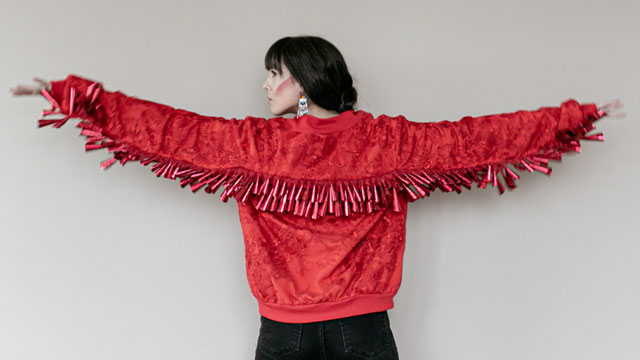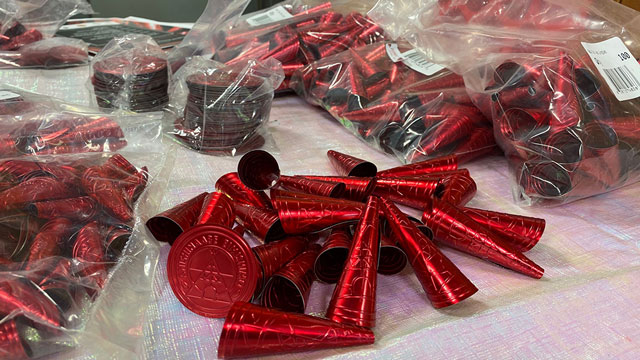The jingle dress dance has come to be known as a healing dance in Ojibway and other communities, especially on the powwow circuit.
A new initiative launched Thursday is taking that idea one step further.
Émilie McKinney has created one of kind red jingles as part of an awareness and fundraising campaign to help families of missing and murdered Indigenous women and girls.
It’s believed to be the first time jingle cones have been made in this colour.
“I honestly thought people would be kind of weirded out or something. This isn’t something I’ve seen before. People are used to the nickel, the brass and the copper,” McKinney said at the launch.
“I was kind of worried people were not going to like it at first or scared to try it.”
The 19-year-old is the owner of Anishinaabe Bimishimo Corporation where she manufactures and sells jingles across North America.
She started the business two years ago after her local jingles supplier retired.
Read More:
Facing U.S. steel tariffs, Manitoba teen seeks funding for jingle cone business
McKinney is an accomplished hoop, fancy, jingle and traditional dancer from Swan Lake First Nation in Manitoba who has traveled internationally to participate in the powwow circuit.
She believes the red cones will find a new home on these same trails.
“Often times at powwows they’ll host red dress specials. Jingle dress dancers will dance jingle in hopes to heal someone,” McKinney said. “If there’s a red dress special why not add some red cones to it too.”
Even though McKinney’s been at it for awhile this project taught her new things.
She had to work with colour coders to develop a new form of paint to ensure the colour would not chip or stain the dresses.
To help with the launch the teen approached eight dressmakers from Canada and the United States with the idea of creating pieces that can be sold or auctioned off.
One of those was Anishinaabe Mohawk designer Lesley Hampton.
(The bomber jacket created by Lesley Hampton. Photo courtesy: Lesley Hampton)
Hampton created a bomber style jingle jacket, which retails for $1,300. Part of those proceeds will go to the Indigenous-led and youth-centred organization We Matter.
Melissa Lowe was another designer McKinney worked with.
She made three dresses after the teen and her mother approached the seamstress last fall.
Lowe is from Naotkamegwanning First Nation or Whitefish Bay in northwestern Ontario.
It’s one of the three communities where the jingle dress dance originated.
Lowe was “honoured” to participate in the project.
“It’s pretty unique to represent the MMIW with those cones in that way,” she said.
Proceeds will go to various organizations including the Eagle Urban Transition Centre in Winnipeg, Bear Clan Patrol Inc., Manitoba Keewatinowi Okimakanak, Ma Mawi Wi Chi Itata Centre; as well as some families and a group in Fort Hall, Idaho.
McKinney said she’s already sold half of her stock in less than a day.
She plans on introducing new colours with the hopes of fundraising for other causes.
In an unfortunate turn of events, some cash and 40 bags of jingles amounting to $2,000 in cash value were stolen from McKinney’s mother’s vehicle.
The teen believes it happened during the event but the family only found out afterwards.
She said police are investigating.
Despite the setback, McKinney is proud of what the campaign has accomplished and she plans on introducing new colours with the hopes of fundraising for other causes.
The red jingles are available online at anishinaabebimishimo.ca or at more than 15 stores across Canada and the U.S.












